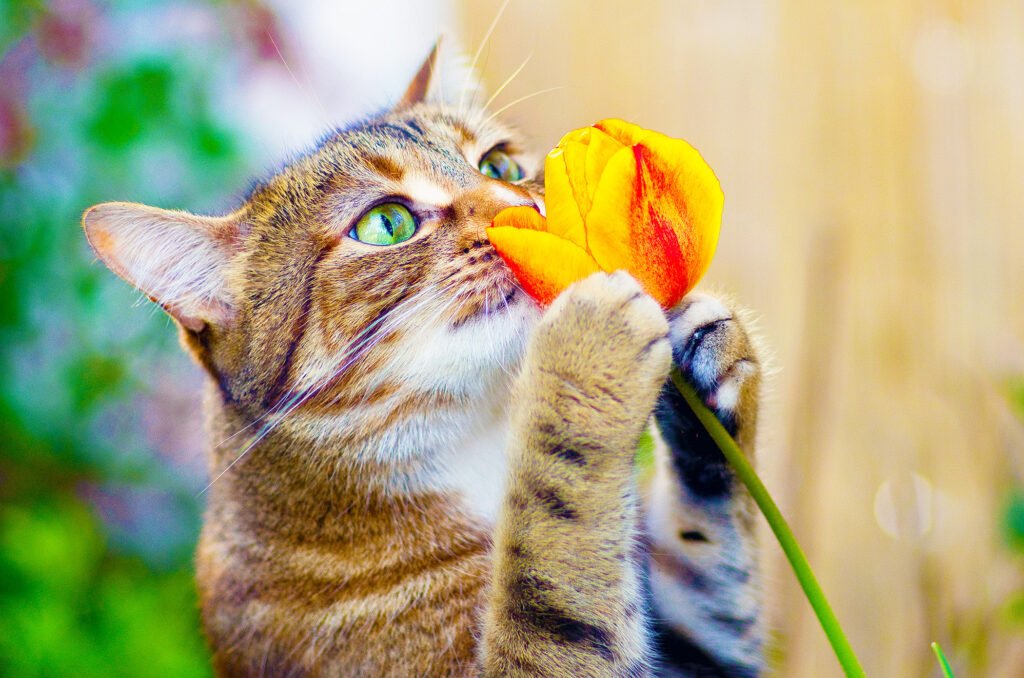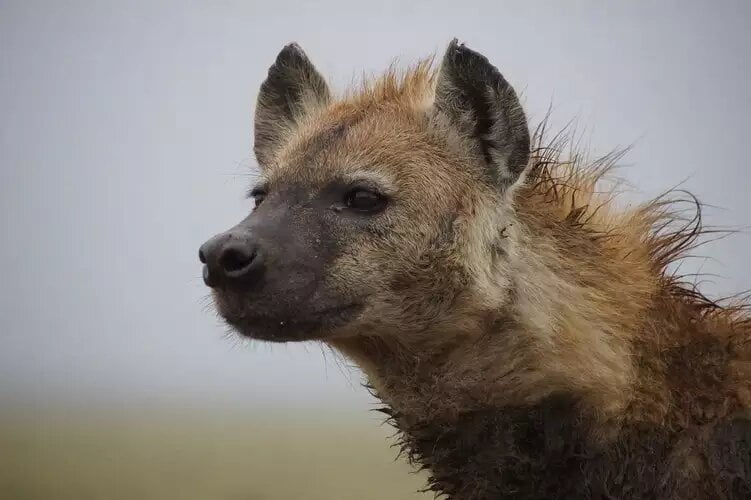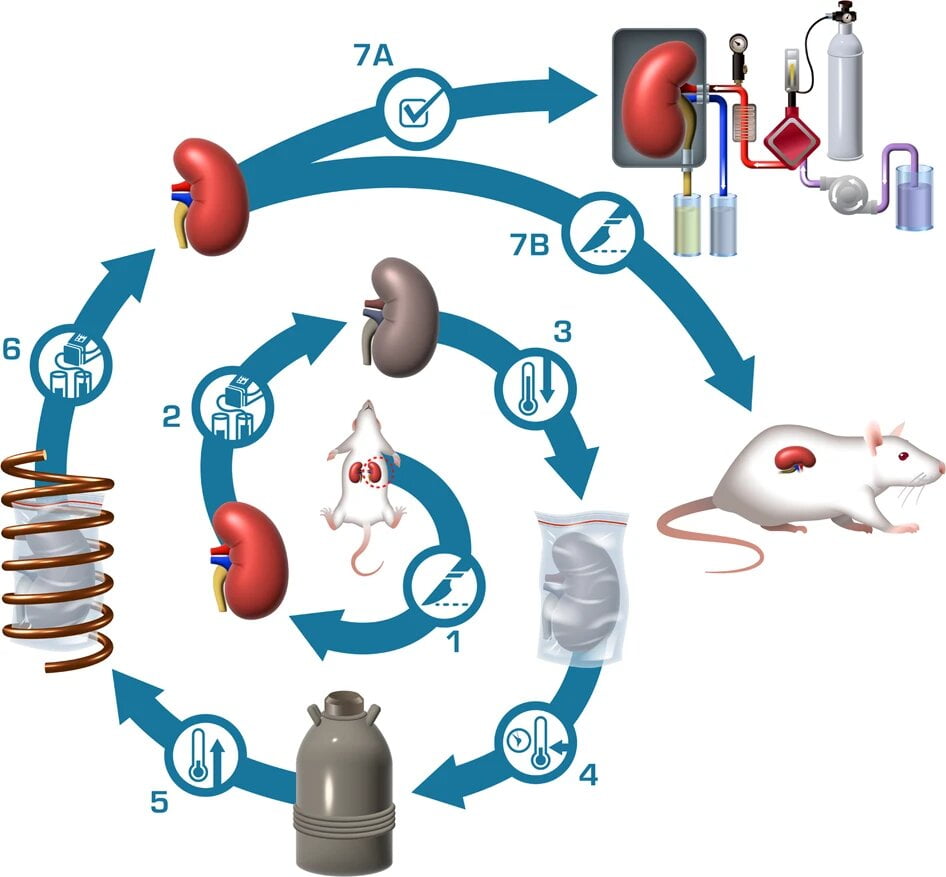Scientists have cracked the mystery of the amazing ability of cats’ noses. Cats have a special system of air circulation in their nasal passages that seems to be a mystery.
The spikes in the bones in their noses give them the amazing ability to smell food, friends, and enemies.
A detailed study of the cat’s nasal passage has revealed these fascinating facts. The research team created 3D computerized cat noses.
Using this analogy, they modeled the attraction of air containing the familiar smell of cat food. What they found was fascinating.
How cat noses work inside
The team noticed that the air that the cat inhaled split into two separate streams. One stream is washed and moistened.
The other stream carries the scent directly and quickly to the olfactory region. This is the part of the cat’s brain responsible for smell.
The researchers explain: “In reality, the cat’s nose is very functional and has two purposes.”
Scientists compare cat noses to gas chromatographs
A gas chromatograph is a laboratory instrument that detects and separates chemicals in vaporized form. Cats’ noses work so well that they may inspire improvements in the chromatographs we use today.
Alligator noses are also sensitive to gas chromatography. However, their long form is very different from the compact head of a cat.
The researchers think that the small head of the cat caused an evolutionary change. This created a wonderful way for air to get inside their little heads. They allow cats to adapt to different environments.
Kai Zhao, lead author of the study and assistant professor of otolaryngology at Ohio State’s College of Medicine, offered his thoughts.
He said: “It’s a good design when you think about it.” Zhao explained the importance of smell to mammals. It helps them in tasks such as finding food, detecting hazards, and tracking environmental changes.
Dogs are a good example, Zhao said. “A dog can smell and know what’s gone through – was it a friend or not?” It is believed that there have been many different ways to adapt to different species and control their olfactory behavior.
The secret to cats’ amazing noses may lie in their airways
By closely observing and analyzing the flow of air, Zhao’s team realized that the two areas may serve two different purposes. This interesting study was published in PLOS Computational Biology on June 29, 2023.
Previously, Zhao’s lab used models to study the flow of air through the nasal passages of rats and humans. But the high-end cat model and matching experiment is their most challenging work to date.
He created these complex models using a cat head scanner. They identified different types of nasal nerves at a lower level.
It took a lot of time and effort to create this model and understand the benefits of cat noses.
Zhao said, “The cat’s nose probably has the same complexities as the dog’s, and it’s more complex than the rat’s — and it begs the question — why did the nose evolve to be so complex?”
Airflow mysteries solved using computer simulations
Computer simulations helped them find the answer. The researchers observed two distinct regions of air flow during inhalation.
The lungs receive a single breath that filters and spreads slowly over the roof of the mouth. The other stream carries odors quickly through the central passageway to the olfactory region behind the nose.
The study also revealed something unexpected. When the air reaches the olfactory region, it circulates through the same spaces. “It’s like you’re smelling it, the air is shooting back there and then it’s being processed for a long time,” Zhao said.
Zhao and his team were the first to quantify the difference in gas chromatography between animals and other organisms. They estimate that the noses of these cats are 100 times better at detecting smells than the straight noses of amphibians found in a skull of the same size.
He develops the theory of parallel gas chromatography. In this model, parallel olfactory coils, which are fed by a high-speed stream, increase the length of the flow path. This reduces the pressure of the surrounding air. A slow speed can allow for a good smell.
Although we have a good understanding of vision and hearing, we have little knowledge about the process of smell.
“We know a lot about vision and hearing, but not much about the nose,” Zhao admitted. However, the work of his group can serve as a starting point for understanding the evolutionary processes that arise from different groups of noses and their functional goals.
New technology to mimic the function of a cat’s nose
The results of this study may further shed light on the evolution of mammalian noses. It also offers exciting career prospects.
A special air system found in cats’ noses can stimulate the arteriosclerosis. In particular, the development of gas chromatographs used in various scientific fields.
In the end, it seems that cats, with their unique shape of the airways and small noses, have more scientific support than previously thought.
Their refined sense of smell may be the key to furthering our understanding of the olfactory system. We have a lot to learn about its evolution and how to use technology.
Zhenxing Wu, a postdoctoral researcher in Zhao’s lab, is the first author of the study. Additional co-authors include Jianbo Jiang and Fritz Lischka of the Monell Chemical Senses Center in Philadelphia; Scott McGrane of the Waltham Petcare Science Institute in the United Kingdom; and Yael Porat-Mesenco of the University of Pennsylvania.
The project was supported by the National Institutes of Health and Mars Petcare UK.
More about cats
Often kept as pets, cats are small carnivores, scientifically known as Felis catus.
It is one of the oldest and most beloved pets of mankind.
In the past, cats were domesticated in the Near East about 9,500 years ago. The ancient Egyptians revered cats and worshiped a cat goddess called Bastet.
Physical characteristics
Physically, cats are strong and agile creatures. Their bodies are very flexible. The cat family is famous for its ability to climb and jump.
A cat’s vision is far superior to that of most other animals. Because of their amazing sense of smell, people often compare cats’ noses to high-tech machines.
They also feel really good. They communicate using different sounds (meowing, purring, hissing) and body language.
Character
Cats are solitary hunters that prefer to hunt small animals such as rodents or birds. Even well-fed cats often do this. They are also territorial creatures that use scent marks to define their territory.
They groom themselves for most of their day and are known to be clean. Cats also sleep a lot, with some older cats sleeping more than 20 hours a day.
They breed
Cats come in many different colors. Each type has its own unique look and feel.
For example, Siamese cats are known for their bright blue eyes and short coats, while Maine Coons are large, friendly cats with long fur.
Food
In food, cats are important meat. This means that their bodies need food, especially meat. They have a unique metabolism that requires more protein than dogs.
Interestingly, cats also have a different appetite for sweets due to changes in the taste receptors. They cannot taste like humans or other animals do.
Giving birth
Reproduction, cats have a large birth. Females are “polyestrous”. This means that she can have many cycles throughout the year if she is not deployed.
Overall, cats are independent but loving pets, each with their own personality. They have been people’s friends for thousands of years and continue to be loved by people all over the world.
#Cat #noses #nose #structures #work #modern #drug #detection #equipment


